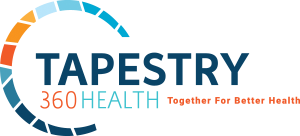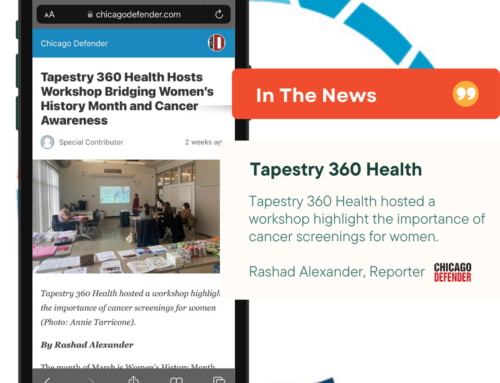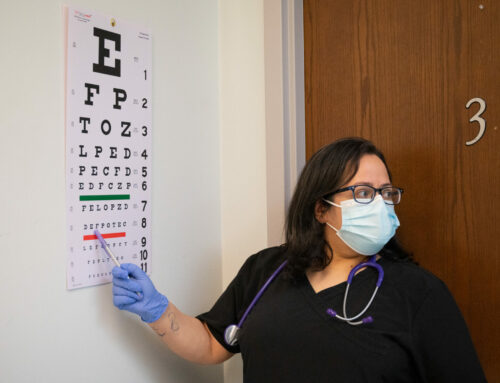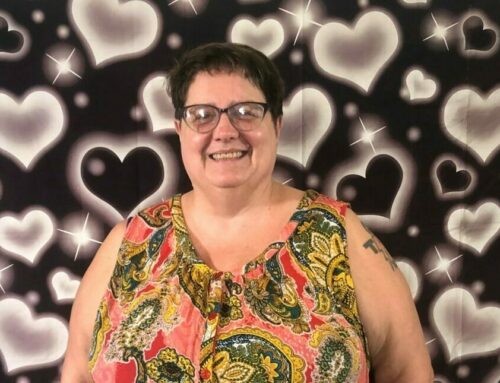News
Are you sneezing? Itchy, watery eyes?
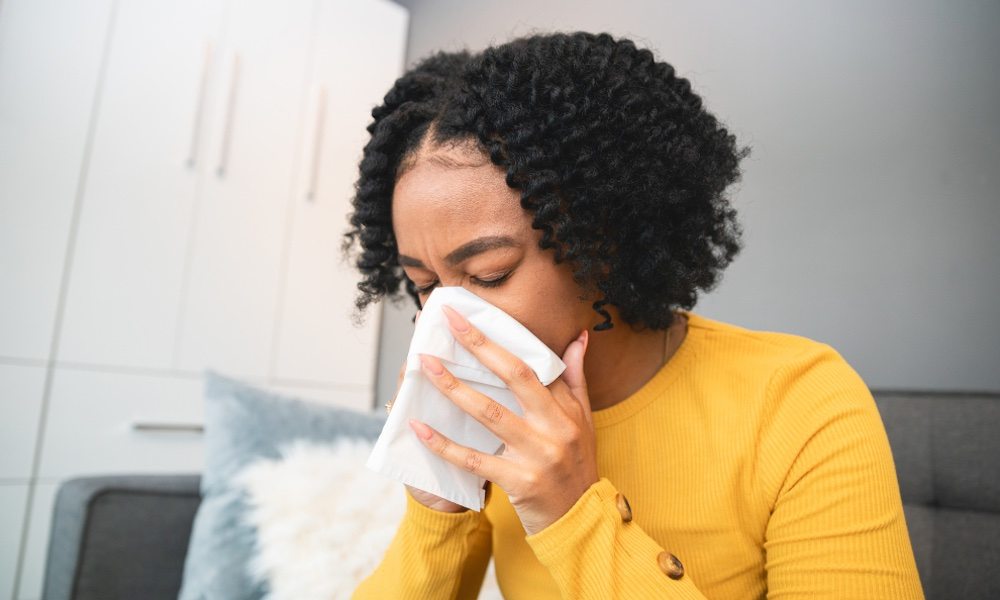
If you think allergies are affecting you, talk your doctor at your next visit or make an appointment today at (773) 751-7800.
by Dr. David Freedman
The days are getting longer; the breeze is a little warmer. The chirping birds wake you up in the morning the trees are beginning to bud, and you are beginning to sneeze, have an itchy, stuffy nose, and itchy eyes and throat. Seasonal allergies are allergies that are caused by different types of pollen in the air at different times of the year. Pollen is the very small seeds of male plants, and when some of it gets into your nose, eyes or airway cause an allergic reaction. The pollen attaches to the tissue in your nose or around your eyes and your immune system says “Hey that doesn’t belong here, we are going to attack it???. It is your immune system’s attack which releases something called histamine which causes all of the annoying symptoms.
The Spring months April to June brings us pollen from trees. From June to August the major pollen comes from grasses and from August to the first frost generally in late October the major source of pollen is ragweed, which you find in every alley and abandoned lot in Chicago. I have allergies to trees and ragweed. Some people have allergy symptoms all year round, also known as perennial allergies. These people may be allergic to dust, foods, or bugs, and may benefit from getting allergy testing. You can follow pollen level on most weather websites such as www.accuweather.com or www.pollen.com.
Allergy or Hay Fever symptoms are familiar to sufferers. People will have itchy noses, throats and eyes. They may have nasal congestion, and watery red eyes. Because of congestion in the nasal sinuses, people develop dark circles under their eyes called “allergic shiners???. People who constantly wipe their noses “allergic salute??? will develop a little crease on their nose. Some people will develop some nose bleeds because of irritation and vigorous blowing. People may develop allergic dermatitis sometimes called eczema. Also about a third of people who have asthma get worse with allergies, and these patients may get short of breath, cough or have wheezing.
Your Heartland provider can get test you for allergies with a blood test called the RAST test. You can also have skin testing, but that would have to be done by an allergist. However, most providers do not test if your symptoms are seasonal, because we can make a good guess to what you are allergic.
When the pollen count is high it is very difficult to get away from, but people do recommend that allergy sufferers try to stay inside on warm windy days when pollen counts are high, and if possible in an air conditioned space with the windows closed. One trick that you can do is use saline spray and when you come in from outside to spray your nose to wash away the pollen. A similar but more involved device is the neti pot which completely irrigates the sinuses.
Then there are medicines. The oldest and most common medications for allergies are Antihistamines. The first ones were Benadryl or diphenhydramine and Chlortrimeton (chlorpheneramine). These medications stop itching in the nose, eyes and skin, as well as sneezing. They do not treat congestion. For that you need something like Sudafed or pseudoephedrine. Many Antihistamines have a decongestant added to them. Unfortunately these older antihistamines make you sleepy and so they are not used much anymore. Claritin or Loratidine came out in 1993 and did not make most people sleepy so became very popular. This was followed by Zyrtec (cetirizine) and Allegra (fexofenadine). All of these medications are now sold without a prescription and often together with a decongestant as in Claritin-D or Allegra-D. They are conveniently dosed once or twice a day. The brand name medications are pretty expensive and the generics work just as well. Zyrtec (cetirizine) does make some people sleepy. These medications have very few side effects but unfortunately are not covered by public aid.
The other commonly used medication for nasal symptoms is Flonase or fluticasone. This is a nasal “steroid??? (it doesn’t make your nose stronger). It helps itching, sneezing and congestion and has very few side effects. There are other similar medications such as Nasacort (triamcinolone) Beconase (beclomethasone) or Rhinocort (budesonide). Fluticasone is also available without a prescription and the generic is much cheaper than the brand. Fluticasone is also covered by public aid.
Many allergy sufferers also have eye symptoms, and sometimes the antihistamines do not take away all of the itching and watery eyes. (Nasal steroids only help nose symptoms). There are many eye drops that help these symptoms. The old standard is Visine AC which is a decongestant that helps redness. There are also antihistamines such as Patanol (olopatidine) or Optivar (azelastine) and combinations of antihistamines and decongestants like Opcon. Some of these are available without a prescription and some are covered by public aid.
Antihistamines are also used in children for allergies (they don’t do anything for runny noses from a cold). Nasal steroids such as fluticasone can be used and are very effective for kids as young as 4.
If you think allergies are affecting you, talk your doctor at your next visit or make an appointment today at (773) 751-7800.
by Dr. David Freedman
The days are getting longer; the breeze is a little warmer. The chirping birds wake you up in the morning the trees are beginning to bud, and you are beginning to sneeze, have an itchy, stuffy nose, and itchy eyes and throat. Seasonal allergies are allergies that are caused by different types of pollen in the air at different times of the year. Pollen is the very small seeds of male plants, and when some of it gets into your nose, eyes or airway cause an allergic reaction. The pollen attaches to the tissue in your nose or around your eyes and your immune system says “Hey that doesn’t belong here, we are going to attack it???. It is your immune system’s attack which releases something called histamine which causes all of the annoying symptoms.
The Spring months April to June brings us pollen from trees. From June to August the major pollen comes from grasses and from August to the first frost generally in late October the major source of pollen is ragweed, which you find in every alley and abandoned lot in Chicago. I have allergies to trees and ragweed. Some people have allergy symptoms all year round, also known as perennial allergies. These people may be allergic to dust, foods, or bugs, and may benefit from getting allergy testing. You can follow pollen level on most weather websites such as www.accuweather.com or www.pollen.com.
Allergy or Hay Fever symptoms are familiar to sufferers. People will have itchy noses, throats and eyes. They may have nasal congestion, and watery red eyes. Because of congestion in the nasal sinuses, people develop dark circles under their eyes called “allergic shiners???. People who constantly wipe their noses “allergic salute??? will develop a little crease on their nose. Some people will develop some nose bleeds because of irritation and vigorous blowing. People may develop allergic dermatitis sometimes called eczema. Also about a third of people who have asthma get worse with allergies, and these patients may get short of breath, cough or have wheezing.
Your Heartland provider can get test you for allergies with a blood test called the RAST test. You can also have skin testing, but that would have to be done by an allergist. However, most providers do not test if your symptoms are seasonal, because we can make a good guess to what you are allergic.
When the pollen count is high it is very difficult to get away from, but people do recommend that allergy sufferers try to stay inside on warm windy days when pollen counts are high, and if possible in an air conditioned space with the windows closed. One trick that you can do is use saline spray and when you come in from outside to spray your nose to wash away the pollen. A similar but more involved device is the neti pot which completely irrigates the sinuses.
Then there are medicines. The oldest and most common medications for allergies are Antihistamines. The first ones were Benadryl or diphenhydramine and Chlortrimeton (chlorpheneramine). These medications stop itching in the nose, eyes and skin, as well as sneezing. They do not treat congestion. For that you need something like Sudafed or pseudoephedrine. Many Antihistamines have a decongestant added to them. Unfortunately these older antihistamines make you sleepy and so they are not used much anymore. Claritin or Loratidine came out in 1993 and did not make most people sleepy so became very popular. This was followed by Zyrtec (cetirizine) and Allegra (fexofenadine). All of these medications are now sold without a prescription and often together with a decongestant as in Claritin-D or Allegra-D. They are conveniently dosed once or twice a day. The brand name medications are pretty expensive and the generics work just as well. Zyrtec (cetirizine) does make some people sleepy. These medications have very few side effects but unfortunately are not covered by public aid.
The other commonly used medication for nasal symptoms is Flonase or fluticasone. This is a nasal “steroid??? (it doesn’t make your nose stronger). It helps itching, sneezing and congestion and has very few side effects. There are other similar medications such as Nasacort (triamcinolone) Beconase (beclomethasone) or Rhinocort (budesonide). Fluticasone is also available without a prescription and the generic is much cheaper than the brand. Fluticasone is also covered by public aid.
Many allergy sufferers also have eye symptoms, and sometimes the antihistamines do not take away all of the itching and watery eyes. (Nasal steroids only help nose symptoms). There are many eye drops that help these symptoms. The old standard is Visine AC which is a decongestant that helps redness. There are also antihistamines such as Patanol (olopatidine) or Optivar (azelastine) and combinations of antihistamines and decongestants like Opcon. Some of these are available without a prescription and some are covered by public aid.
Antihistamines are also used in children for allergies (they don’t do anything for runny noses from a cold). Nasal steroids such as fluticasone can be used and are very effective for kids as young as 4.
